It looks like you're using an Ad Blocker.
Please white-list or disable AboveTopSecret.com in your ad-blocking tool.
Thank you.
Some features of ATS will be disabled while you continue to use an ad-blocker.
20
share:
The 'Supreme Ultimate' diagram of Taoism, the Taijitu of Yin and Yang dates back in China to around a coupke of thousands years ago, yet its origins
can be found much earleir in the cultures of Cucuteni and Trypillia dating to around 7,000 years ago, early European cultures.
The motif is also known from later European cultures such as the Etruscans and Celts, but as can be read on Wiki it is generally considered these did not have the associated schools of metaphysical thought that the Chinese had.
en.wikipedia.org...
What i'll demonstrate here is the extent of the Cucuteni-Trypillian school of cosmological/metaphysical. thought.

First a little background on the cultures;
www.imagoromae.com...
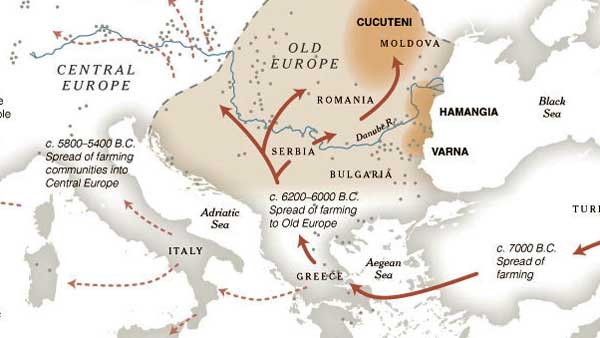
The basis of the symbolism of these cultures is found in cosmology, the place of man within the greater pattern and dynamism of the Earth and Heavens, and the most fundamental aspect was the observance of the anti-clockwise rotatin of the skies of the Northern hemisphere around Celestial North, and the clockwise rotation of the Southern hemisphere,

In conjunction with this observance, they also noted principle points of rising upon the horizon, portals or gateways of the sun, planets and stars, and the tracking of pathways across the horizons, all seen above in conjunction with the small stepped motif which indicates 'place of establishment' in terms of portal/rising point.
Again a small piece such as seen below will be indicating these interests, the spiral concerned with the rotation of the hemispheres, the portal sign translation across the horizons.
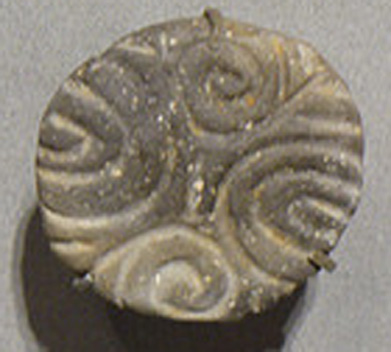
The concern with movement also gives rise to understanding of time and seasons, in the piece below Ursa Major is seen represented four-square, the four positions it would rotate through on the daily basis, as well as the four positions it would appear in over the quarters of the year, the solstices and equinoxes.

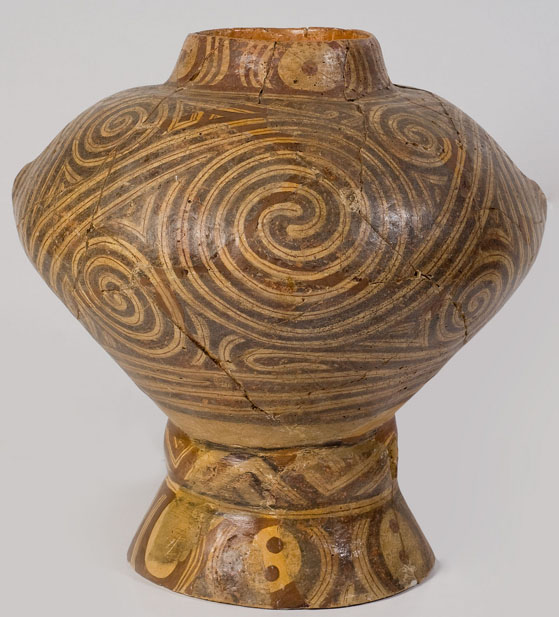
Related to this the worlds oldest swastika is Cucuteni, marking this turning through the four quarters.

Also represented was Ursa Minor seen in triple form around Celestial North, this was associated with the three principle points of transition across the horizon, the two solstice points and singular equinox point of rising, and the essential triad of Earth, Underworld and Heavens being of a singular Unity.
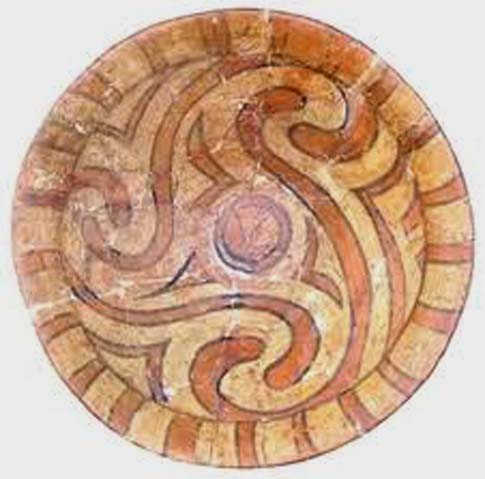
These factors were interwoven into complex symbolism as seen below, were the three portals of the horizon are represented, with sexual association, they also concened themselves with the arc curvature of the ecliptic and galactic planes, the relationship and interconnectivity of these.
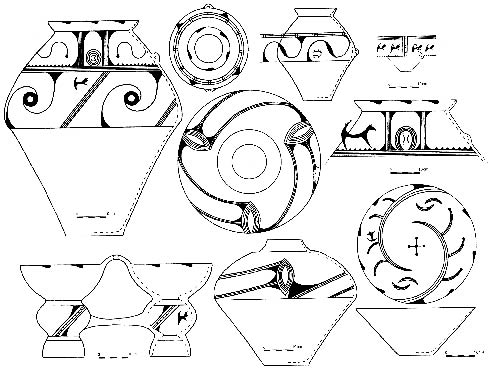
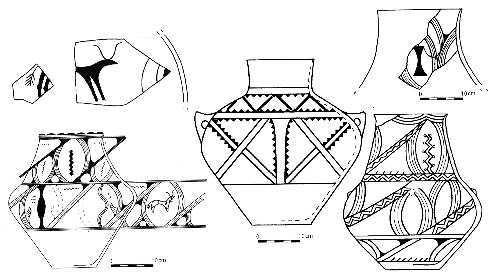
When one has understood then what these cultures were concerned with, the rotation of the hemisphers, the transition across the horizons, the three levels of Earth/Underworld/Heaven, one can begin to make sense of their craftwork and symbolism, it is there to be read and understood;
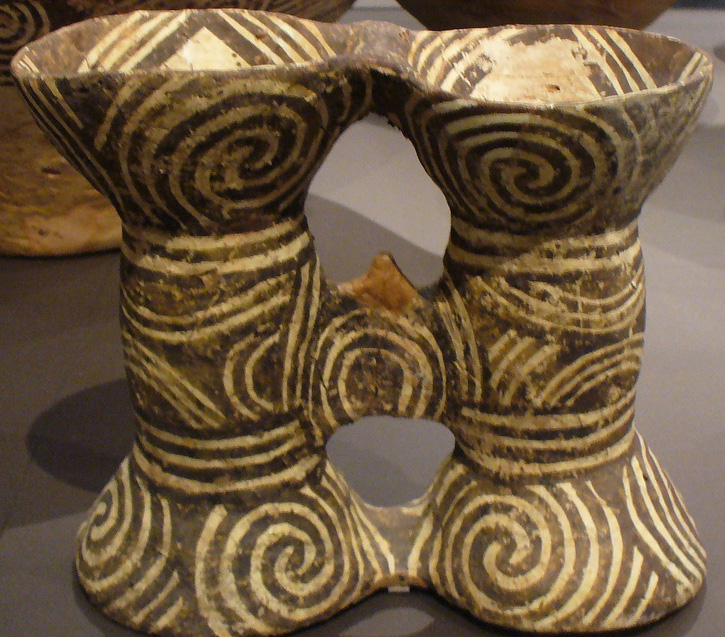
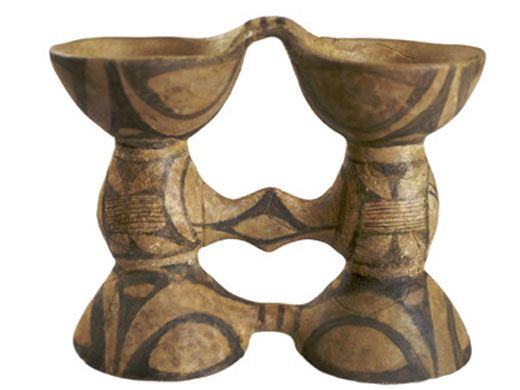
In some ways these pieces might remind one of Egyptian representations of the Amduat, with the various levels and gateways within the Underworld, the basis is the same, in the Cucuteni-Trypillian examples one sees much more interest in the complexities of arc curvature however, the shifting relationship of the ecliptic and galactic planes which provided means of access into and transition through the Underworld, their art is not abstract it is diagramatic;

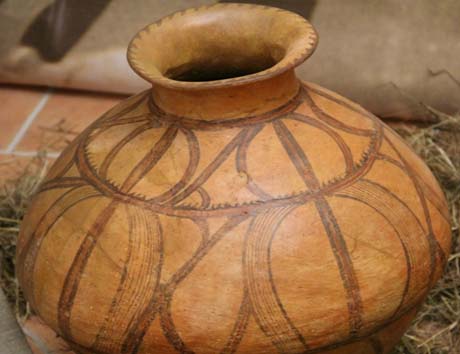
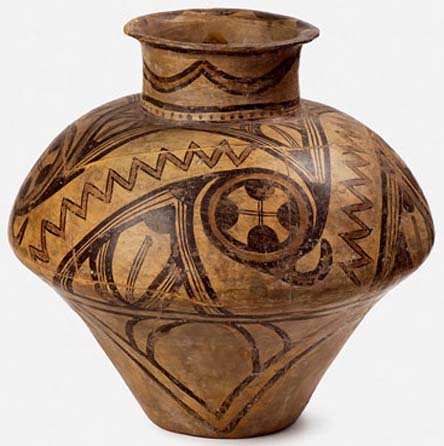
The cosmological symbolism also translated onto the human form, thus the man was in harmony with the pattern of the Heavens, man was the driving force of the bull, the female associate with the sensual curvature of the feline and the myriad complexities of the bee...certainly they had a Divine couple had stood over the triple gateways of the horizon and the sun rose between them in perfect harmony....
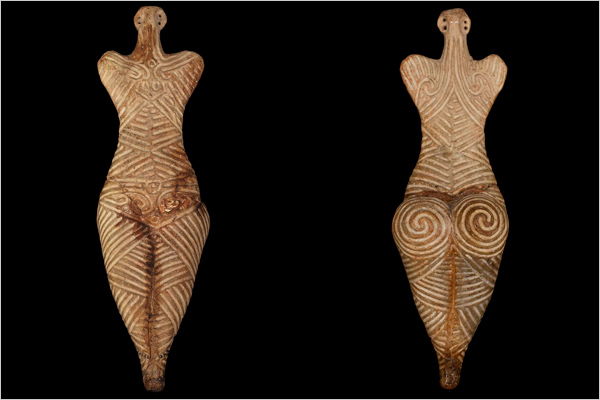
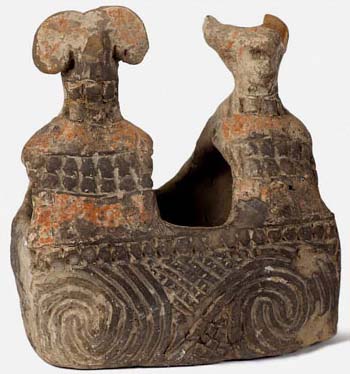
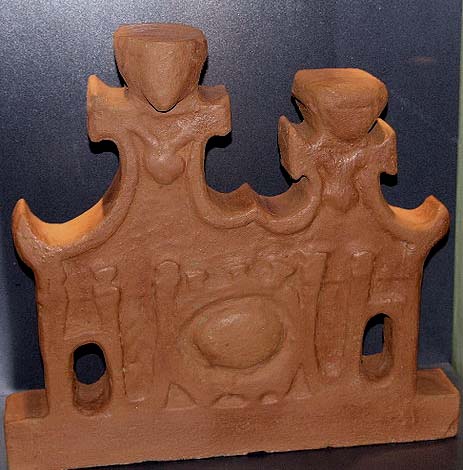
The context for the 'Supreme Ultimate' symbol is that it is seen on a shrine, these were painted red'black/white representing Earth/Underworld/Heavens respectively, and in origin can be traced back to Catal Hoyuk, below are the Cucuteni-Trypillian version;
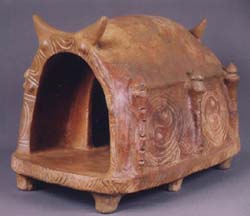
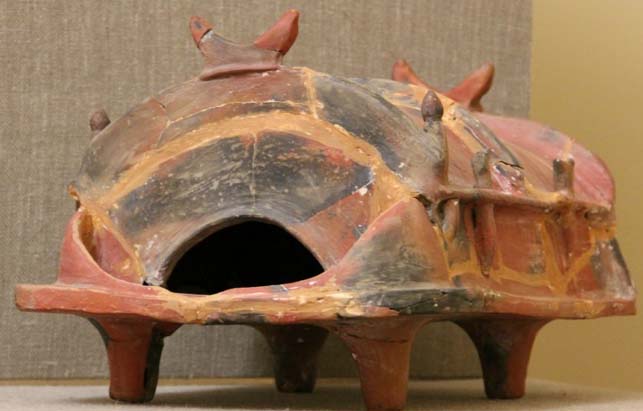
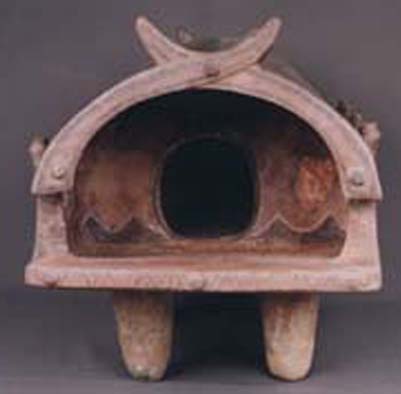
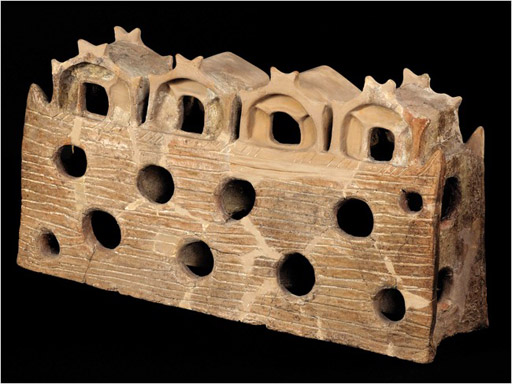
The Akhet type twin mountain symbolism of the horizon can also be seen within, but these are very intriguing when compared with drawings from Catal Hoyuk,

The little 'black underworld type demon figure' also finds comparison on Cucuteni-Trypillian ceramics;
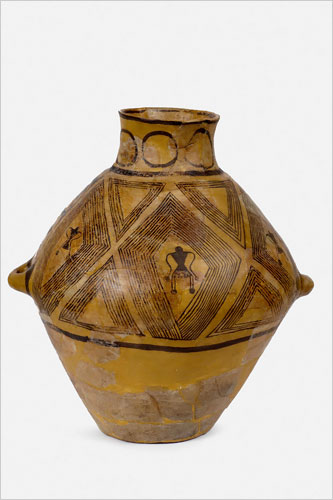
A fringe benefit in these interests in the rotating of the Heavens and the dynamic driving force of the bull is that they also invented the wheel...
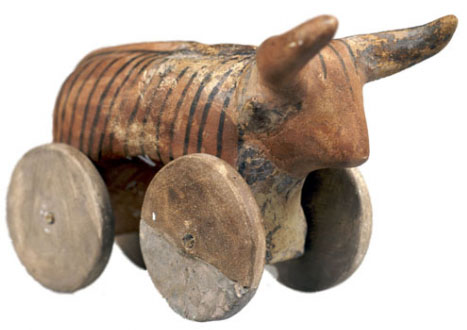
The motif is also known from later European cultures such as the Etruscans and Celts, but as can be read on Wiki it is generally considered these did not have the associated schools of metaphysical thought that the Chinese had.
en.wikipedia.org...
What i'll demonstrate here is the extent of the Cucuteni-Trypillian school of cosmological/metaphysical. thought.

First a little background on the cultures;
www.imagoromae.com...
The name of this civilization was conventionally established by archaeologists, according to the villages of Cucuteni (in Romania, near Iaşi) and Trypillia (in Ukraine, near Kiev), where, by the end of the 19th century, where there were for the first time discovered painted ceramics and fired clay statuettes – categories of items which became symbols of this ancient civilisation. During the more than one hundred years which past since their discovery, these archaeological settlements entered the specialized scientific literature worldwide. We are in the front of a civilization spreading over about 350.000 sq km, with thousands of settlements of various dimensions, proto-cities of hundreds of hectares, with large fortification systems, with dwellings of various types, from the simple huts to the two storey-constructions, with a ceramicware within which the usefulness is harmoniously combined to the aesthetic aspect, much over the usual specificity of the time, with a fascinating religion, whose traces are marked by idols and cult items of a deep symbolism, whose ritual functionality represents another subject of interpretation

The basis of the symbolism of these cultures is found in cosmology, the place of man within the greater pattern and dynamism of the Earth and Heavens, and the most fundamental aspect was the observance of the anti-clockwise rotatin of the skies of the Northern hemisphere around Celestial North, and the clockwise rotation of the Southern hemisphere,

In conjunction with this observance, they also noted principle points of rising upon the horizon, portals or gateways of the sun, planets and stars, and the tracking of pathways across the horizons, all seen above in conjunction with the small stepped motif which indicates 'place of establishment' in terms of portal/rising point.
Again a small piece such as seen below will be indicating these interests, the spiral concerned with the rotation of the hemispheres, the portal sign translation across the horizons.

The concern with movement also gives rise to understanding of time and seasons, in the piece below Ursa Major is seen represented four-square, the four positions it would rotate through on the daily basis, as well as the four positions it would appear in over the quarters of the year, the solstices and equinoxes.


Related to this the worlds oldest swastika is Cucuteni, marking this turning through the four quarters.

Also represented was Ursa Minor seen in triple form around Celestial North, this was associated with the three principle points of transition across the horizon, the two solstice points and singular equinox point of rising, and the essential triad of Earth, Underworld and Heavens being of a singular Unity.

These factors were interwoven into complex symbolism as seen below, were the three portals of the horizon are represented, with sexual association, they also concened themselves with the arc curvature of the ecliptic and galactic planes, the relationship and interconnectivity of these.


When one has understood then what these cultures were concerned with, the rotation of the hemisphers, the transition across the horizons, the three levels of Earth/Underworld/Heaven, one can begin to make sense of their craftwork and symbolism, it is there to be read and understood;


In some ways these pieces might remind one of Egyptian representations of the Amduat, with the various levels and gateways within the Underworld, the basis is the same, in the Cucuteni-Trypillian examples one sees much more interest in the complexities of arc curvature however, the shifting relationship of the ecliptic and galactic planes which provided means of access into and transition through the Underworld, their art is not abstract it is diagramatic;



The cosmological symbolism also translated onto the human form, thus the man was in harmony with the pattern of the Heavens, man was the driving force of the bull, the female associate with the sensual curvature of the feline and the myriad complexities of the bee...certainly they had a Divine couple had stood over the triple gateways of the horizon and the sun rose between them in perfect harmony....



The context for the 'Supreme Ultimate' symbol is that it is seen on a shrine, these were painted red'black/white representing Earth/Underworld/Heavens respectively, and in origin can be traced back to Catal Hoyuk, below are the Cucuteni-Trypillian version;




The Akhet type twin mountain symbolism of the horizon can also be seen within, but these are very intriguing when compared with drawings from Catal Hoyuk,

The little 'black underworld type demon figure' also finds comparison on Cucuteni-Trypillian ceramics;

A fringe benefit in these interests in the rotating of the Heavens and the dynamic driving force of the bull is that they also invented the wheel...

edit on 10-10-2012 by Kantzveldt because: (no reason given)
Very nice, well thought, and detailed thread.
I am sure many cultures, have "evolved" from prehistoric infancy, and many of their teachings, have evolved right up to our Present day. Our ancestors were very spiritual.
I will take a look at this thread, in detail, as time constraints have me, in a bind this morning.
Great Job.
S&F
I am sure many cultures, have "evolved" from prehistoric infancy, and many of their teachings, have evolved right up to our Present day. Our ancestors were very spiritual.
I will take a look at this thread, in detail, as time constraints have me, in a bind this morning.
Great Job.
S&F
Great way to use an ancient pair of pliers. Recycling at it's best.
In martial arts a common saying is: You push I'll pull, you pull I'll push. The symbol may be a representation of this push-pull relationship which
further might be inferred as a representation of these forces in physics. I've been enjoying your threads immensely. Thanks for sharing.
Amazing !!
I've never heard about this civilization before. Thank you for sharing.
I've never heard about this civilization before. Thank you for sharing.
reply to post by sonnny1
Thanks, it's surprising though how much sources from the core Neolithic region and then was transfered to other regions, rather than many cultures developing independantly, branches from a particular seed as were.
reply to post by usernamehere
Yes, a theory of harmonious opposites, the stars are driven around Celestial North counter clockwise yet in the South this direction is opposite...that was what got them thinking.
Thanks, it's surprising though how much sources from the core Neolithic region and then was transfered to other regions, rather than many cultures developing independantly, branches from a particular seed as were.
reply to post by usernamehere
Yes, a theory of harmonious opposites, the stars are driven around Celestial North counter clockwise yet in the South this direction is opposite...that was what got them thinking.
edit on 10-10-2012 by Kantzveldt because: (no reason given)
Originally posted by Sinter Klaas
reply to post by Americanist
Enjoy the ride
Thank you for the link.
You're welcome... Yup, I'm no stranger to getting back in line to hit all the seats!
The Council of Goddess' and Gods figurine assemblages are another intriguing aspect of Cucuteni culture, argubly when establishing the patterns and
parameters of the Heavens these were concieved as presiding over the various directions, a Pantheon based on geometric projection.
Curiously though the children of the fertility type Goddess figures are an aspect of this harmonious schemta having their own little council...
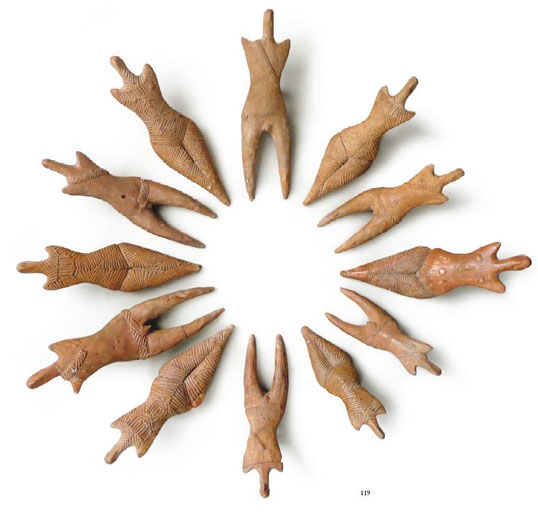
The council above appears to be 6 males figures and 6 female, which would equate them with the much later Olympian pantheon.
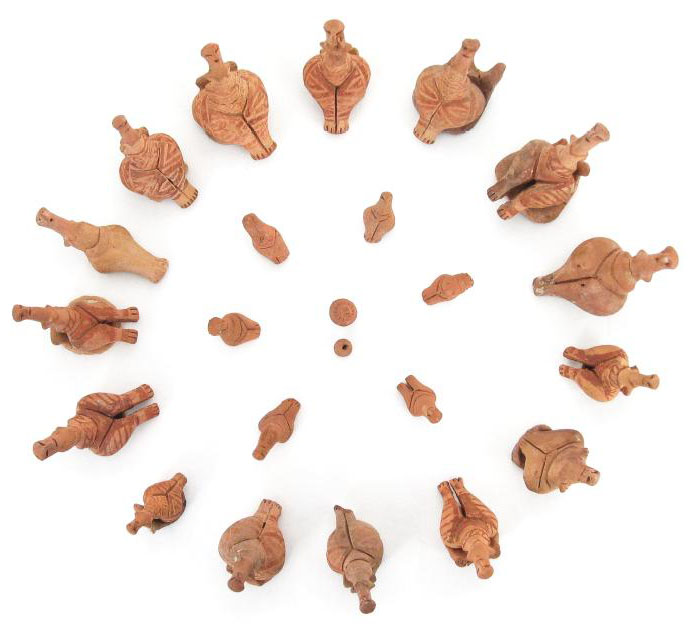
isaw.nyu.edu...

Curiously though the children of the fertility type Goddess figures are an aspect of this harmonious schemta having their own little council...

The council above appears to be 6 males figures and 6 female, which would equate them with the much later Olympian pantheon.

isaw.nyu.edu...

edit on 11-10-2012 by Kantzveldt because: (no reason given)
reply to post by Kantzveldt
Interesting didn't know until going to the wiki link that the earliest ying yang in its current form was from a Roman military unit and not Chinese.
I believe this culture you posted would have been contemporary with the Beaker Culture that eventually became Hallstatt and then La Tene...and some of those piece look very much like the later La Tene imo.
Interesting didn't know until going to the wiki link that the earliest ying yang in its current form was from a Roman military unit and not Chinese.
I believe this culture you posted would have been contemporary with the Beaker Culture that eventually became Hallstatt and then La Tene...and some of those piece look very much like the later La Tene imo.
reply to post by MagnusMaximus
Beaker culture was a couple of thousand years later, give or take, and was of the Central European migration from the core Neolithic region.
Beaker culture was a couple of thousand years later, give or take, and was of the Central European migration from the core Neolithic region.
reply to post by Kantzveldt
Wow!
That last picture, while humanoid, is in no way human.
Good thread, op....the pottery pics remind me of the pottery shards I've found here in New Mexico.
Wow!
That last picture, while humanoid, is in no way human.
Good thread, op....the pottery pics remind me of the pottery shards I've found here in New Mexico.
there is a display in the national history museum in moscow of the evolution of trypillian figurines pictured here
now if you go to the british museum you see this figurine from cyprus.
and at the louvre they have one from tyre
guess they wanted their sun and sea.
now if you go to the british museum you see this figurine from cyprus.
and at the louvre they have one from tyre
guess they wanted their sun and sea.
reply to post by Parta
Thanks for those they're great, no one has ever matched in weirdness the 'Madonna and child ' figurines of the Neolithic period.
It doesn't surprise me to see the close resemblance of the Trypillian and Cyprian as they are of the same period just differant branches from the common source of the core region.
Thanks for those they're great, no one has ever matched in weirdness the 'Madonna and child ' figurines of the Neolithic period.
It doesn't surprise me to see the close resemblance of the Trypillian and Cyprian as they are of the same period just differant branches from the common source of the core region.
Originally posted by Kantzveldt
It doesn't surprise me to see the close resemblance of the Trypillian and Cyprian as they are of the same period just differant branches from the common source of the core region.
those last three cover the final trypillian up to about 2300bc when they disappear.
cyprus versions start about 2000bc and in lebanon a little later.
peace
reply to post by Kantzveldt
Path to higher consciousness begins with childlike innocence.
Promote action to gain various types of understanding.
Condense units of such understanding to council.
Integrate this council into a single director.
Utilize director to reach out to others.
Reach out to others via sacrifice.
Become sacrifice to expand.
Expand to unite as "One."
Path to higher consciousness begins with childlike innocence.
Promote action to gain various types of understanding.
Condense units of such understanding to council.
Integrate this council into a single director.
Utilize director to reach out to others.
Reach out to others via sacrifice.
Become sacrifice to expand.
Expand to unite as "One."
reply to post by Parta
Yes interesting, the neighbouring Gumelniţa–Karanovo culture seems to have been influential in particular stylistic features, the figure below is also highly reminiscent of Jomon figurines too;
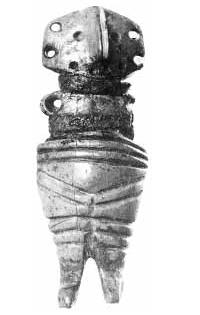
en.wikipedia.org...
Some aspects of the styling might be similar to the bird like facial features of Indus valley figurines;
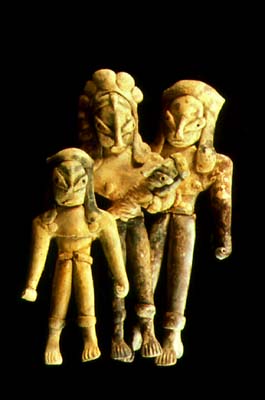
wondersofpakistan.wordpress.com...
Yes interesting, the neighbouring Gumelniţa–Karanovo culture seems to have been influential in particular stylistic features, the figure below is also highly reminiscent of Jomon figurines too;

en.wikipedia.org...
Some aspects of the styling might be similar to the bird like facial features of Indus valley figurines;

wondersofpakistan.wordpress.com...
edit on 16-10-2012 by Kantzveldt because: (no reason given)
if you are wanting to fall into the crazy world of paleolithic, neolithic, chalcolithic, bronze age etc figurines
themis at picassa
has what must be nearly 10k of them... and pottery
they are ruffly divided up by region
have fun... peace
ps: tell me this isn't a ferengi
themis at picassa
has what must be nearly 10k of them... and pottery
they are ruffly divided up by region
have fun... peace
ps: tell me this isn't a ferengi
edit on 16-10-2012 by Parta
because: (no reason given)
new topics
-
Putin, Russia and the Great Architects of the Universe
ATS Skunk Works: 2 hours ago -
A Warning to America: 25 Ways the US is Being Destroyed
New World Order: 7 hours ago
top topics
-
President BIDEN's FBI Raided Donald Trump's Florida Home for OBAMA-NORTH KOREA Documents.
Political Conspiracies: 12 hours ago, 31 flags -
A Warning to America: 25 Ways the US is Being Destroyed
New World Order: 7 hours ago, 13 flags -
Las Vegas UFO Spotting Teen Traumatized by Demon Creature in Backyard
Aliens and UFOs: 17 hours ago, 7 flags -
Is AI Better Than the Hollywood Elite?
Movies: 14 hours ago, 4 flags -
Maestro Benedetto
Literature: 14 hours ago, 1 flags -
Putin, Russia and the Great Architects of the Universe
ATS Skunk Works: 2 hours ago, 1 flags
active topics
-
Chris Christie Wishes Death Upon Trump and Ramaswamy
Politicians & People • 25 • : RazorV66 -
Gaza Terrorists Attack US Humanitarian Pier During Construction
Middle East Issues • 43 • : ToneD -
A Warning to America: 25 Ways the US is Being Destroyed
New World Order • 14 • : jidnum2 -
Skinwalker Ranch and the Mystery 1.6GHz Signal
Aliens and UFOs • 145 • : Ophiuchus1 -
University of Texas Instantly Shuts Down Anti Israel Protests
Education and Media • 273 • : HerbertWest -
Krystalnacht on today's most elite Universities?
Social Issues and Civil Unrest • 6 • : FlyersFan -
Hate makes for strange bedfellows
US Political Madness • 50 • : 19Bones79 -
Weinstein's conviction overturned
Mainstream News • 28 • : burritocat -
Sunak spinning the sickness figures
Other Current Events • 25 • : Ohanka -
Cats Used as Live Bait to Train Ferocious Pitbulls in Illegal NYC Dogfighting
Social Issues and Civil Unrest • 24 • : NoviceStoic4
20

